Sacrifice Flies
In the 2007 MLB playoffs Cleveland got a boost from an unlikely fan: Pestilence.
Back in the bad old days of the 1970s, when the river was on fire and industry was fleeing and the ball club still played in an Olympic-sized stadium built for a future that never came, some in the city embraced an unofficial motto:
Cleveland—you gotta be tough.
Things had greatly improved by the 21st century, but toughness still came in handy. As it did in the fall, when Jacobs Field, the city’s premier baseball venue, became the epicenter of an Old Testament-style plague. As it did on September 4, 2004.
Officially the Cleveland Indians were hosting the Anaheim Angels, but unofficially both teams hosted hordes of flying insects.
Players waved their gloves and hats and swatted, but it was like trying to wave away a blizzard. Troy Glaus, the Angels’ designated hitter that night, had a terrible time of it in the fifth inning. “One the first pitch one flew in my ear. On the next pitch one flew in my eye. I decided to just swing at the next one.” He grounded out to third base.
People tried every repellent spray they could get their hands on. The ball boys covered their heads in towels, the base coaches wiped down any hitter unfortunate enough to reach base, and fans completed a reverse migration into higher seats to seek relief from the clouds of bugs.
Play was stopped several times while personnel cleared eyes, ears, noses, and mouths. “It was disgusting, atrocious,” Glaus said. “There were too many to kill. There were millions of them—everywhere.”
Cleveland starting pitcher Jason Davis had recently arrived from the Indians’ AAA team. Peering in through the bugs, he said he had tried to use the distraction to his advantage. “I think it was tougher on the hitters than the pitchers.”
And in Cleveland, you gotta be tough.
In 2007 Jacobs Field’s reputation as Mother Nature’s laboratory was enhanced when an actual blizzard disrupted the Indians’ opening series in Cleveland. The snow fell so heavily that the home opener eventually took place three states away, under the sheltering roof of Miller Park in Milwaukee.
The “home team” persevered in that series, winning two out of three. They won 94 more games after that, enough to secure the American League Central division championship and a playoff series against the wild card New York Yankees.
The series began in Cleveland, and this time nature seemed in a forgiving mood. It was early October but the city was enlivened by balmy weather. The Indians took the first game of the series behind their ace, CC Sabathia, and a lot of hitting with runners on base. Their 12-3 victory made the second game a pivotal one for the Yankees, looking to halt a string of un-Yankee-like early postseason exits.
The second game was excruciatingly tight in the way only postseason baseball can be. The Yankees took a 1-0 lead in the third inning with a solo home run by their center fielder, Melky Cabrera, but otherwise the starters, Andy Pettitte and Fausto Carmona,1 dueled.
In the seventh inning New York was still clinging to a one-run lead. With one out Pettitte gave up a double and a walk. It was a tight spot, but manager Joe Torre had the perfect escape artist up in the bullpen, and he called for the rookie righthander, Joba Chamberlain. Chamberlain entered the game and got the two outs he needed with no trouble at all. Everyone knew he would return for the eighth inning to get three more batters before Mariano Rivera locked down the ninth. In 2007 Chamberlain, just 22, was the Yankees’ Bridge of Sighs.
Joba Chamberlain started the year in A ball as a touted prospect, and he lived up to the expectations, shooting through the minor league system until August, when there was nowhere to go but New York and a pennant race. Chamberlain was envisioned as a front of the rotation-type starter, but in order to limit his usage and protect his arm he was converted to a relief role before reaching the majors. Joe Torre was given a powerful bullpen weapon—and a strict set of usage conditions that became popularly known as the “Joba Rules.”
In 19 games he pitched 24 innings with a miniscule 0.38 ERA. The pitcher regularly hit 100 miles an hour in an era when that was notable and had excellent control. In his two-month debut he walked just six batters (two in his debut appearance), hit one, and threw just one wild pitch.
After Chamberlain extinguished his first playoff threat, Cleveland’s Fausto Carmona continued stifling Yankees’ lineup in the top of the eighth. The first two batters hit weak ground balls right back to the mound, bringing up the Yankees’ first baseman, Doug Mientkiewicz.
Up until that point it had been merely a buggy evening, but as the sun set the swarm arrived. Under a descending curtain of insects Mientkiewicz repeatedly called for time stepping out of the batter’s box and expecting the air around him to clear. It never did. He eventually managed to make contact. “We play through rain, we play through snow, we play through cold,” he said. “Bugs shouldn’t make a difference.”
That was his attitude as he ran hard to first base, trying unsuccessfully to beat a throw. By the time he arrived, his thinking had changed: “It’s not fun when you run down the line and you’ve got them in your nose and your mouth and your eyes.”
Naturalists who study Chironomus plumosus, commonly known as the “buzzer midge,” say that the insects play an important role in Great Lakes ecosystems. According to one expert employed at the Cleveland Metroparks, the flying bugs did their part mostly by providing “timely calories” for other, more dynamic species of insects, birds, and fish.
A major reason midges were mainly useful as food for other animals is the fact that adult midges do not have mouths themselves. Once an adult midge takes flight, its existential countdown begins; it has just days to gather with other midges and reproduce. During this climactic phase of their lives, the Metroparks’ naturalist explained, “they are just starving to death while waiting to mate.”
The misunderstood buzzer midge is often misidentified. It is neither gnat nor mayfly nor mosquito, neither blood sucker or disease carrier. And they certainly don’t resemble—as Indians’ third baseman Casey Blake put it—”small pterodactyls.” They are just here for a few hot nights, looking for one life-affirming good time before it’s all over.
The duration of spring and summer in the region usually gave Lake Erie’s midges time for two or three life cycles each year, but the warm autumn weather in 2007 (evening temperatures neared 80 degrees) allowed an atypical fourth cycle, one that got underway right along with baseball’s postseason. Normally the midges did most of their business over the lake itself, but strong wind currents had blown them inland and the ballpark floodlights did the rest. And while experts stressed that midges were harmless to humans, one did concede that a swarm “could be disruptive” to human activities.
Joba Chamberlain returned to the mound for the eighth inning, but while he was away conditions had become decidedly Triassic. Tens of thousands of midges now swarmed the field. “It was like blankets of them out there,” Joe Torre said.
“It’s like somebody set them loose,” Yankees shortstop Derek Jeter said. “Just when you think you’ve seen it all.”
As Chamberlain warmed up, the Yankees’ trainer emerged from the dugout carrying a large can of bug spray. The pitcher lifted his arms as he was covered head to toe in the chemicals, which mixed with his own sweat to create a substance that, for a midge, was not all that different from glue.
Squinting and swatting, Chamberlain faced the Indians’ center fielder, Grady Sizemore, at the top of the order. The pitcher threw four straight balls. Facing Asdrúbal Cabrera, Chamberlain overthrew a slider that missed catcher Jorge Posada entirely for a wild pitch. Sizemore advanced to second.
“He was having trouble seeing out there,” Torre said. “I’ll tell you one thing about the kid—he never lost his composure.”
One bug expert later explained that midges weren’t attracted to people except for their height. Looking for the highest place to rest during “centralized mating,” they found a good spot atop the 6’ 2” frame of the Yankees’ relief pitcher standing on a little hill.
After the wild pitch Chamberlain called for time and asked for another lather of bug spray, which the home plate umpire, Laz Diaz, allowed. The Yankees infielders offered Diaz a hit from their supply of repellent and he accepted. “I don’t know what you tell him,” Jeter said of Chamberlain. “The bug spray wasn’t working.”
Asdrúbal Cabrera sacrifice bunted, sending Sizemore to third, 90 feet from erasing the Yankees’ slim lead. The next batter, designated hitter Travis Hafner, made contact, lining out sharply to a kneeling Mientkiewicz at first base. “I’m just thankful I didn’t have any bugs in my eye at the time, because I’d still be laying out there,” Mientkiewicz said.
“It was a bad time,” Joe Torre said. The infielders waved in front of their faces and flinched every few seconds. And do spare a thought for the unlucky midges stuck to Chamberlain’s face and neck, forced to miss the one truly exciting moment of their short existence.
“There were a million of them,” Chamberlain said. “But my job is to pitch.” He tried, throwing ball one to Victor Martinez. Chamberlain “pulled” his next slider for another wild pitch. This one went all the way to the wall before caroming back to Posada as Sizemore barreled for home. Posada shoved the ball to the pitcher, who toppled over as Sizemore came in just underneath the tag. Tie game. Jacobs Field erupted.
Chamberlain, stuck in a whining, crawling nightmare, hit Victor Martinez two pitches later and issued another walk after that. The inning finally ended when a Cleveland batter, Jhonny Peralta, struck out looking. Cleveland had tied the game without a hit, and in one inning Chamberlain had committed roughly as many mistakes as he had all summer.
Torre said he hadn’t considered asking the umpires to delay the game. Even if he had made a request, Bruce Froemming, the umpire crew chief, did not seem sympathetic, calling the plague “a little irritation.”
“We’ve had bugs before,” the umpire said. “I’ve seen bugs and mosquitoes since I started umpiring. It might not be a perfect scenario.”
Only 22 years old, Joba Chamberlain was already mature enough to know that big league pitchers did not make excuses. “They bugged me,” he said after the game (the pun was accidental), “but you’ve got to deal with it.”
Bugs are bugs. It’s not the first time I’ve had a bug near me. It’s something I’ve got to deal with. Maybe you take a little more time, do something different to prepare yourself for the bugs. Just not open your mouth.
The sympathetic veterans were more candid. “They came out of nowhere,” Posada said, “and they were worst at the mound.” One writer described Chamberlain as looking like he was “wearing a turtleneck made of bugs.” Who could be expected to find the strike zone dressed like that?
“I would have probably pulled us off the field,” pitcher Roger Clemens said. “I think it’s hard enough for our young kids to go out there and concentrate in that situation to have something like that happen.”
A few weeks later Torre would belatedly realize his trademark unflappability had failed him that night:
In retrospect, I wish I was a little more proactive. I wish I had gone out to the damn mound and had all the bugs over me, where I could have maybe talked the umpires into maybe stopping play.
The game remained tie after nine innings. The erstwhile Fausto Carmona pitched nine shutout frames before the Indians went to their bullpen, and Mariano Rivera took the ninth and tenth for New York.
Meanwhile, the midge clouds slowly abated. They never entirely moved off, but pitchers and hitters could now see comfortably and nobody else had to wear a bug turtleneck. “Within 45 minutes, they were gone,” Froemming said. “There was just a 10-minute period where everybody was lathering up [with bug spray].”
Mariano Rivera left the game after the tenth inning and the Yankees went quietly in the top of the eleventh. Finally getting a chance against a non-elite pitcher, the Indians managed to load the bases, bringing up Travis Hafner. Cleveland was at that point 0-for-16 with runners in scoring position. There were two outs and a full count when Hafner broke through with a run-scoring single, walking off New York.
Down 0-2 in a best-of-five series, the Yankees packed up in a haze of befuddlement, doom, and stale DEET fumes.
“What are you going to do?” Brian Cashman asked. The Yankees’ executive was speaking to reporters but might as well have been talking to himself. Cashman said the Yankees weren’t going to formally complain for having to play through a collective mating event. “It’s the same for both teams. You could even argue it might be tougher for the hitter with that stuff coming on. We lost more because of Fausto Carmona.”
But the midge invasion had already crested by the time Carmona pitched in the ninth. Joba Chamberlain had borne the brunt. In the aftermath he gave the expected lines, taking responsibility for “letting his team down,” but a particular memory of that night stuck with him. After leaving the game he ran into Hideki Matsui, warming up for his next at-bat.
“He patted me on the back and bugs kind of flew everywhere,” Chamberlain recalled in 2016. “I was like, ‘Man, that really was a lot.’ And as I’m taking a shower, I’m wiping them out of my eyes and stuff. I finally realized it was a lot worse than I thought.”
At age 77, George Steinbrenner remained in control of the Yankees organization, though he had taken several steps back and given a great deal of operational control to his children. He had similarly retreated from media attention, usually only communicating via pre-prepared press releases.
But after the Bug Game, the Boss found a reporter. “Jesus Christ, it was terrible,” he complained to the Record, a New Jersey paper. “It messed up the whole team,” even Derek Jeter. Steinbrenner blamed umpire Bruce Froemming for failing to pause the game in the eighth inning. He had called commissioner Bud Selig to complain. “Selig just said, ‘That’s in the umpires’ hands.’”
“That umpire is full of s***,” Steinbrenner said. He alluded to the fact that Froemming was retiring after 26 years: “He won’t umpire our games anymore.”
And while his team had a tough break in Cleveland, Steinbrenner warned that “they’d better show what they’re made of,” while they still had time to do so. Joe Torre’s job was depending on it. The Yankees’ longtime manager was finishing the last year of a contract paying him $7 million a year. “I think we’re paying him a lot of money,” Steinbrenner said. “He’s the highest paid manager in baseball, so I don’t think we’d take him back if we don’t win this series.”
Even before Steinbrenner’s comments Torre had been perceived as on shaky ground. The team had not won a pennant since 2003 and an ALDS loss in 2006 had nearly earned the manager one of Steinbrenner’s trademark pink slips. Early exits had become the norm, and Steinbrenner—who assured the reporter he remained in “full control” of the team—was not going to tolerate another one.
The Boss had now made it official: Joe Torre’s glory-packed 12-season run in pinstripes might very well end because a bunch of nonbiting flies lucked into a bonus late-season mating cycle. It was like an episode of Seinfeld2 except Steinbrenner was voicing himself.
On October 7 the series moved to New York and Yankee Stadium, where the only natural hazards were rats and pigeons. The Yankees took a four-run lead into the seventh inning and Torre went right back to Chamberlain. Able to see Jorge Posada’s mitt and able to open his mouth whenever he wished, the pitcher found his typical form. He worked a clean seventh inning and even though he gave up a run in the eighth Chamberlain preserved the lead without much evident effort and got the ball to Rivera in the ninth.
Chamberlain did not appear in the decisive fourth game, in which the Indians took a first inning lead and never gave it up. Their 6-4 victory brought the series—and Joe Torre’s auspicious time in New York—to an end.
Cleveland faced the Boston Red Sox in the League Championship Series and after two games in Boston and two in Cleveland the Indians had a commanding 3-1 advantage. On October 15 they had a chance to win the pennant at home. The Cleveland Plain Dealer spoke to entomologists who delivered bad news: the tiny winged heroes of October 5 were very likely all dead and gone.
To give the team a similar shot of confidence, the paper printed a not-at-all-lifelike midge mask in the October 15 edition. Fans going out to Jacobs Field for the game could cut out and wear it like a mask, or “tape it to a stick.” Why not have a bit of fun as the team rolled to a foregone victory?
But these replacement midges seemed to have entirely the opposite effect. The Indians never held another lead—not that night or during the final two games at Fenway Park—and just like that it was over. In three days the Indians went from World-Series-bound to dearly departed.
Sigh. Cue the motto.
The Indians’ 2007 demise is one in a long list of cautionary tales with a similar, unescapable moral: the baseball gods frown on mockery.
And yet, some people never learn.
And on Clear the Field, our podcast…
New episode up! This week we’re enjoying a forfeited game from 1907, when snowballs and a surprising lack of security brought Opening Day festivities at New York’s Polo Grounds to an early but amiable conclusion. Check it out wherever you listen to podcasts, or right here:
In 2011 the Pitcher Formerly Known as Fausto Carmona was identified as one Roberto Hernández, who apparently falsified both his name and his age in the process of coming to pitch in the United States. We’ll be referring to the Pitcher by the name he was called at the time.
Yada yada yada, a year later Joe Torre was managing the Los Angeles Dodgers.



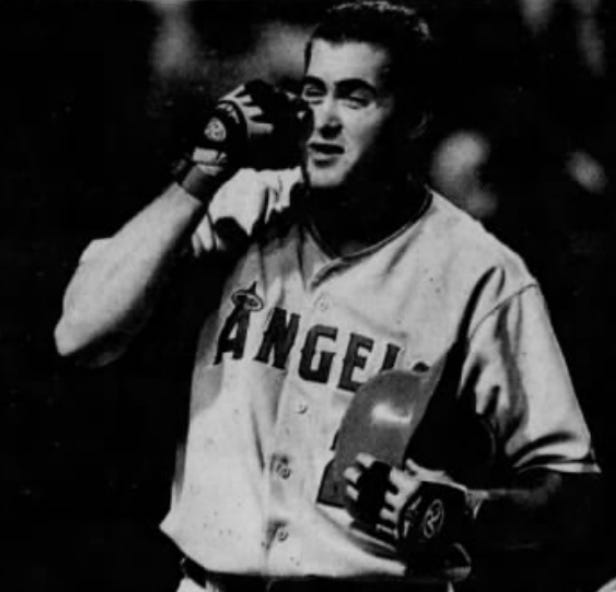

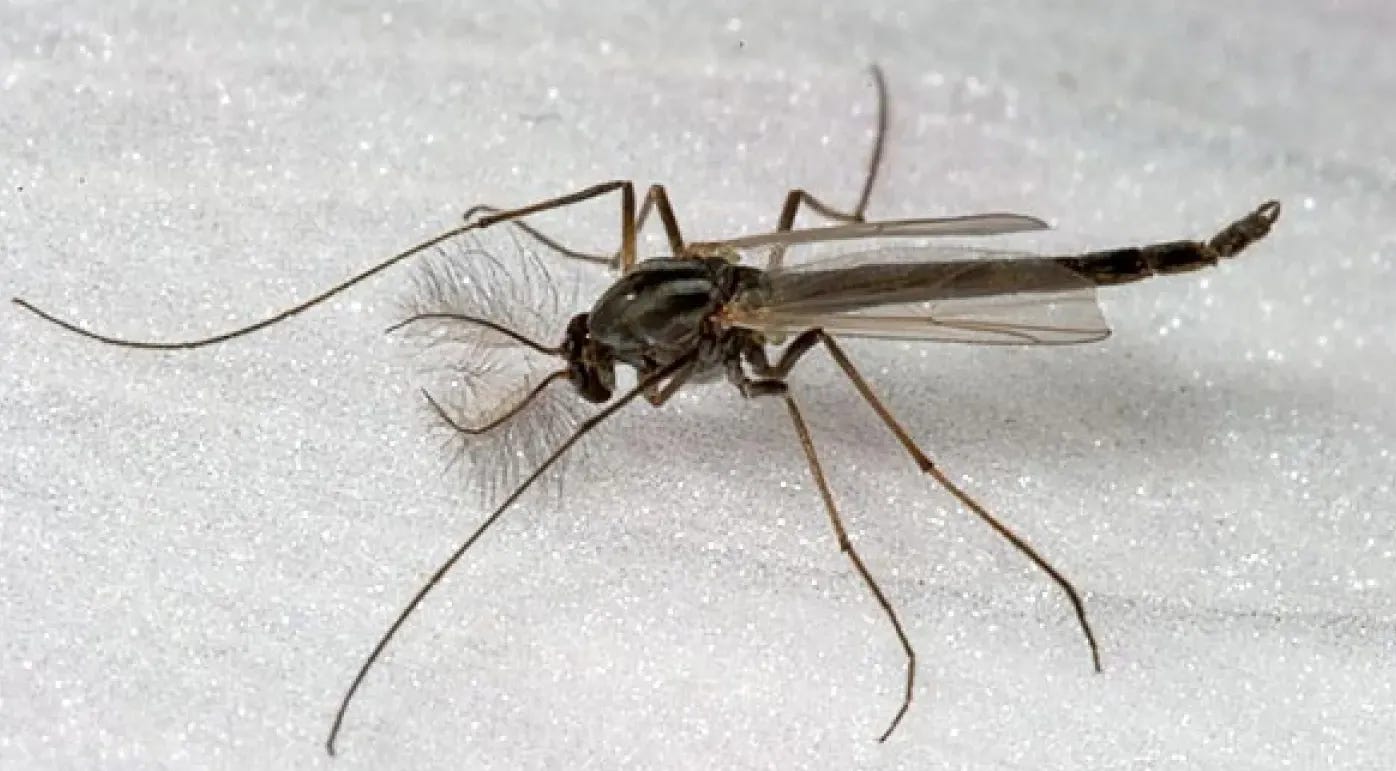
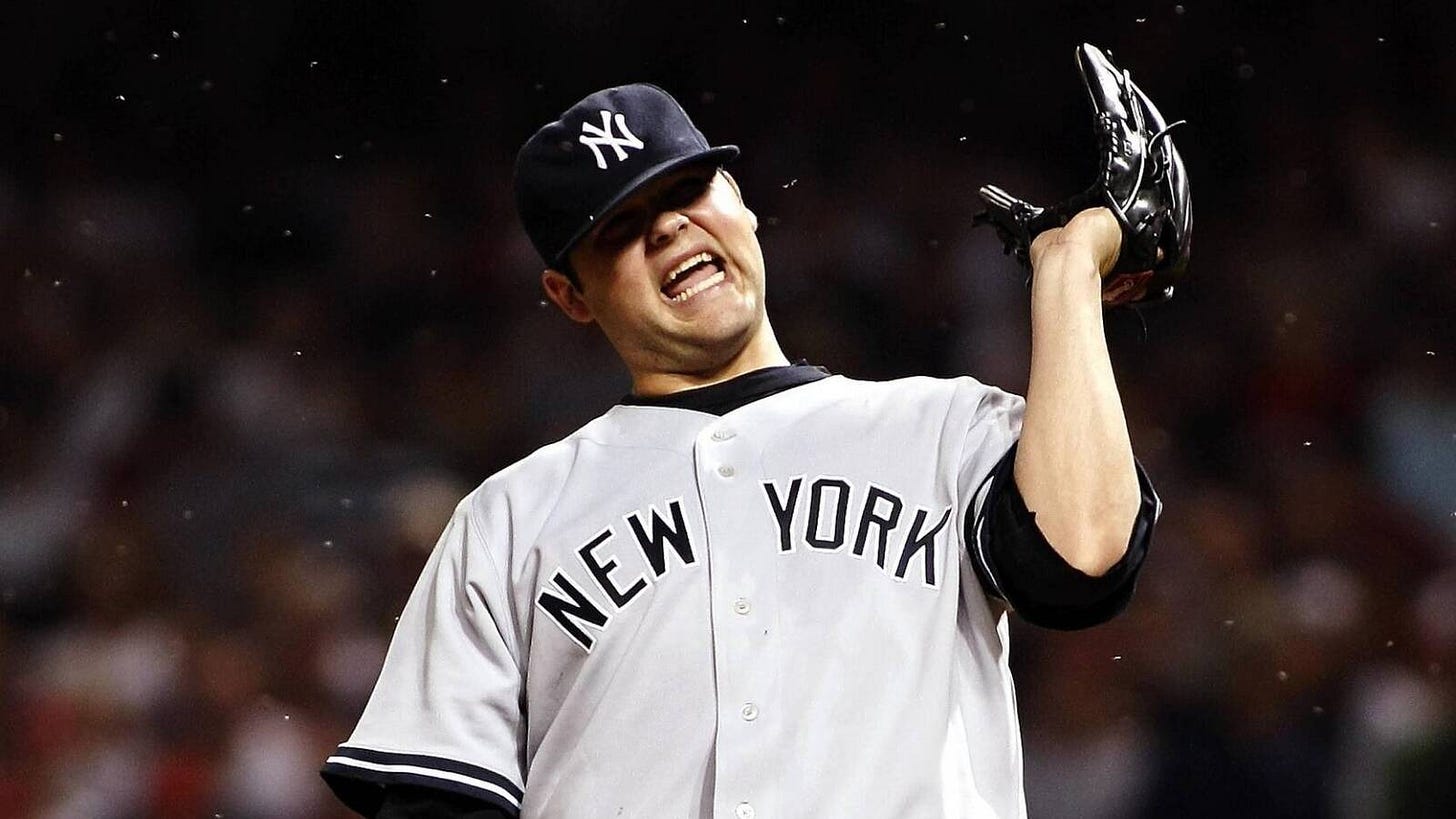

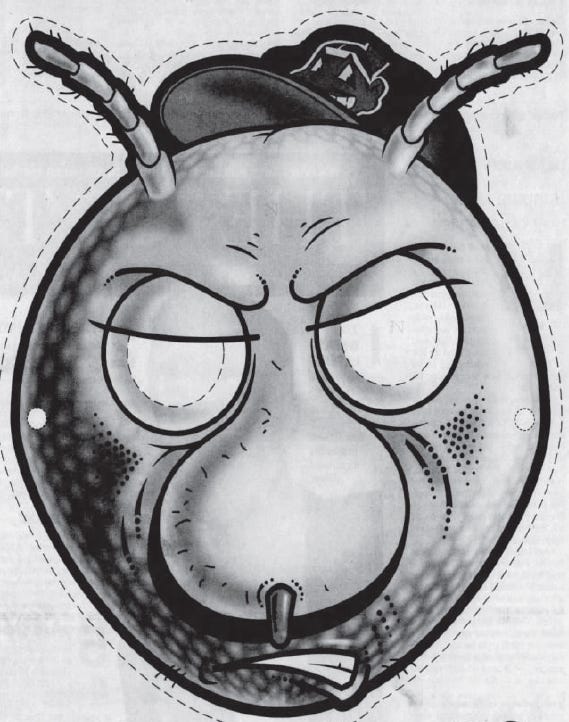
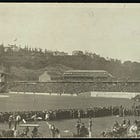
Having really bad flashbacks. Joba Chamberlain, to his credit, still talks about this incident with a great sense of humor whenever someone brings it up to him (at least in his Twitter/X feed anyway).
This one is quite quirky, Paul. I’m as surprised as you are that this game didn’t earn Chamberlain the nickname “Buggsy.”